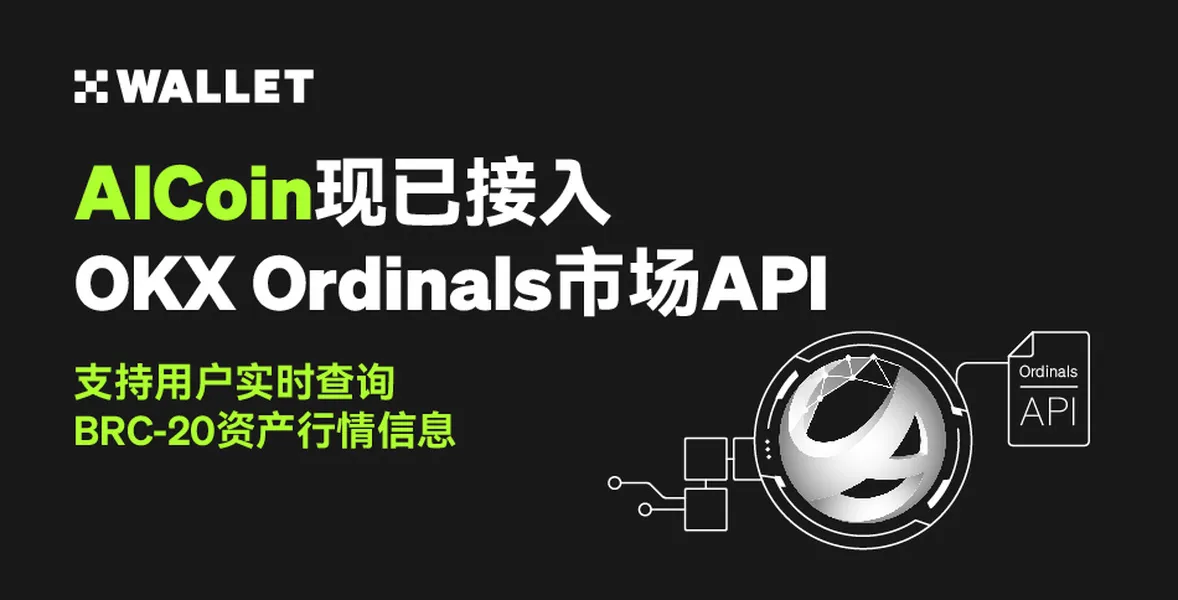立即注册HTX:https://www.htx.com.fj/zh-cn/v/register/double-invite/web/?invite_code=ymcx6223&inviter_id=11354800
按照MEME炒作逻辑,其往往出现在牛市末期,为什么比特币铭文在本轮的牛市初期爆火?为什么铭文在今年上半年衰落一段时间后又再次浴火重生了?这背后的深层原因又是什么?
铭文大热,只是因为Meme炒作?
铭文从本质上看,目前其只是Meme,没有实质性应用。上半年,比特币铭文热炒的时候,市场中很多人认为,这并不会存在很久,就像之前的牛市中,像一阵风,过去之后很快就会消失,就像之前曾经在以太坊上出现的动物园币。但为什么铭文却在今年上半年衰落一段时间后又再次浴火重生了呢?其深层原因又是什么?
在回答上面这个问题前,不妨先思考这样一个现象:很多公链目前的性能其实并不输以太坊,为什么以太坊上的开发者仍然占据绝大多数?从不同维度看,可能答案不同,但最核心的或许在于其共识性更强,这也就使其底层的安全性更强,在区块链行业,共识和价值具有很深的相关性。在明白这一点之后,其实答案或许也就比较容易理解了。相较于以太坊,比特币自然具有更强的共识性和安全性。但接下来的问题便在于,为什么铭文是在这轮牛市大热?
首先,铭文在本轮牛市大热,并非偶然,其实一直存在着希望在比特币链上开发应用生态的一批人,且从未消失。从历史上看,2017年应该算是区块链行业的公链元年,当时各种公链概念层出不穷,比特币为了扩容,以便参与公链竞争,比特币社区内曾经发生过一次分叉,从最后结果看,妄谈比特币走大区块路线已然不可能。
其次,比特币链上应用开始出现客观技术条件支持。伴随Taproot升级,比特币相当于进行了一次相对较大的扩容(就比特币的扩容历史而言),这便吸引了庞大的开发者进入。
最后,在比特币上开发其实更具价值潜力。伴随比特币ETF通过,比特币上的生态应用将拥有更广阔的市场。除此之外,以太坊中的DeFi应用已然成熟,新的开发很难与之竞争,而更为复杂的应用需要更长的时间攻坚。因而,将以太坊上成熟应用迁移至比特币上则机遇明显更大。比如Unisats,连名字都好像是在致敬Uniswap,其设计原理则更是继承Uniswap的主要机制。
铭文背后,比特币链上开发者热情高涨
2022年年底,比特币核心贡献者 Casey Rodarmor 创建了 Ordinals 协议,2023 年 3 月 8 日,一个叫 @domodata的匿名开发者基于 Ordinals 协议推出了 BRC-20,比特币生态Meme代币炒作进入快车道;在 Ordinals 发布后,另一名匿名开发者在 9 月份推出了 Atomicals Protocol ;Atomicals 发布后不到个星期,9 月 26 日,Casey 创建了一个基于 Bitcoin 的同质化代币协议Runes。此外,自BRC-20推出后,社区开发者 Beny 先后推出了 BRC-20 代打工具 LooksOrdinal(无代币)、定位于 OrdFi 的 BRC-20 改进版 Tap Protocol,以及Runes 的改进版 Pipe 。整体上看,这些协议其实都具有一定创新性,可以看出比特币开发者社区的极大热情。
从生态应用上看,比特币侧链或 Layer 2 等基础设施主要有:Stacks、BEVM、Mintlayer、Spiral、Liquid Network、Fedi、Rootstock、Interlay 、Babylon、Botanix、Bison Labs、Alpen Labs、Ark等。
比特币上的DeFi基础设施中比较出名的有:Unisats (其宣称是基于 BRC-20 协议建立,为用户提供流动性和交易的 BRC 20-swap)、Bisq Network 、Atomic Finance等。
比特币上的跨链资产则有:底层由 BitGo 中心化托管的WBTC、Threshold 发行的 tBTC 、 Ren Protocol 发行的 renBTC、 Synthetix 的 sBTC。
整体上看,伴随比特币走向传统市场,比特币的生态用户远远大于以太坊,而伴随Taproot升级和Ordinals 协议推出,一场依托比特币的生态建设运动正在轰轰烈烈展开。从技术发展的角度看,MEME或只是比特币技术推进或者走向应用的一种提前预热,憧憬,或者说是热切渴望。即便比特币核心开发者Luke意欲封杀比特币链上铭文,但有关比特币的开发活动依然可以转入Layer2,这无疑正在成为一种新趋势。
比特币技术更迭加快,BTC打开新叙事
除了Taproot升级,比特币的BIP中还有多项值得关注的地方,很多项有关比特币的重要技术也获得快速推进, 2023 年第四季度中比特币有七项主要发展和建议。
1. BitVM 支持比特币上的表达智能合约。考虑到比特币设计的性质,直接在比特币上执行智能合约既缓慢又昂贵。BitVM 的运行方式类似于以太坊生态系统中的Optimism,包含欺诈证明和挑战响应协议等元素。
2.Taproot Assets 主网上线: Taproot Assets 于 2023 年 10 月 18 日正式发布,其是通过将任意数据输入到 Taproot 脚本 (Tapscript)中创建的。比特币上的山寨币有机会在闪电网络上蓬勃发展。Taproot Assets(正式名称为 TARO)使开发者能够发行、发送和接收基于比特币的资产。
3.OP_CAT 提案:比特币研究员 Ethan Heilman 提交了比特币改进提案 (BIP) )到 Bitcoin-Dev 邮件列表,建议将 OP_CAT 操作码添加到比特币的脚本语言中。该操作码将使开发人员能够在 Tapscript 中构建和评估 Merkle 树和其他哈希数据结构,Tapscript 是原生脚本语言,用于在 Taproot 升级中启用新交易类型。启用 OP_CAT 将消除之前施加的限制,从而进一步增强比特币的可编程性,从而为不同的用例创造新的机会。
4.OP_TXHASH 提案草案:比特币核心开发人员 Steven Roose 提出了一个 BIP,重点关注为比特币脚本语言实施两个新操作码 OP_TXHASH 和 OP_CHECKTXHASHVERIFY 的好处。 OP_TXHASH 操作码将直接与当今比特币的两个主要契约提案 BIP-118 和 BIP-119 竞争。契约是对比特币施加的预先确定的支出条件比特币交易。例如,用户可以创建一个契约,以确保交易接收者只能在 200 个区块后花费发送到其地址的 BTC。
5.Lightning Timeout Trees :闪电网络是比特币的主要第 2 层,其进一步采用的一个关键障碍在于,用户在使用闪电网络时需要启动至少一项链上比特币交易,才能将资金转移到链外。这限制了可以将资产迁移到链下的用户数量,特别是在链上交易费用较高的情况下。长期探索的解决方案是一个称为“通道工厂”的概念,它允许多个用户在一次比特币交易中加入闪电网络。John Law 的“超时树”提案可能找到了使用契约(即 BTC 交易输出的支出条件)的解决方案。该提案引入了协调员(或闪电服务提供商 - LSP)的概念,该协调员将监督用户通道的打开和关闭。通过使用契约,协调员将被限制在未经适当授权的情况下花费用户的 BTC。它是第一个利用契约的通道工厂架构,契约是一种在 BTC 上添加支出条件的强大机制。
6.更新的 Musig 2 提案: MuSig 2 是 MuSig 1 的升级版本,MuSig 1 是一种比特币多重签名方案,可实现隐私性和可扩展性。MuSig 2 (BIP-327) 是 MuSig 1 的改进迭代,通过作为两轮多重签名方案运行,提供卓越的安全性、效率和隐私功能,只需签名者之间的两轮通信即可生成有效签名,而不是三轮。 10 月,Bitcoin Core 开发者 Andrew Chow 提出了两个专注于 MuSig 2 开发的新 BIP。提议的 BIP 是 MuSig 2-PSBT 和 MuSig 2- 描述符。
7.BIP-324 – V2 传输:BIP-324 是对比特币 P2P 层的面向隐私的改进。比特币上的这一层促进了比特币节点之间的数据传输,比特币 P2P 层充当数据的高速公路。最新版本的比特币核心 (v 0.26) 添加了对 BIP-324 中指定的版本 2 加密 P2P 传输的支持。该功能默认处于禁用状态,但允许任何人打开它并从附加保护中受益。这是比特币 P2P 级别的隐私迈出的重要一步。
总结
比特币铭文大热或许不只是一场MEME炒作,更应该看作是一场比特币生态建设的序章。其爆发的原因有三:技术条件是比特币Taproot升级完成;外在条件在于以太坊上创新难度加大,技术迟滞;宏观条件在于比特币ETF通过将产生巨大用户群体,其面临的潜在机遇巨大。
免责声明:本文章仅代表作者个人观点,不代表本平台的立场和观点。本文章仅供信息分享,不构成对任何人的任何投资建议。用户与作者之间的任何争议,与本平台无关。如网页中刊载的文章或图片涉及侵权,请提供相关的权利证明和身份证明发送邮件到support@aicoin.com,本平台相关工作人员将会进行核查。



